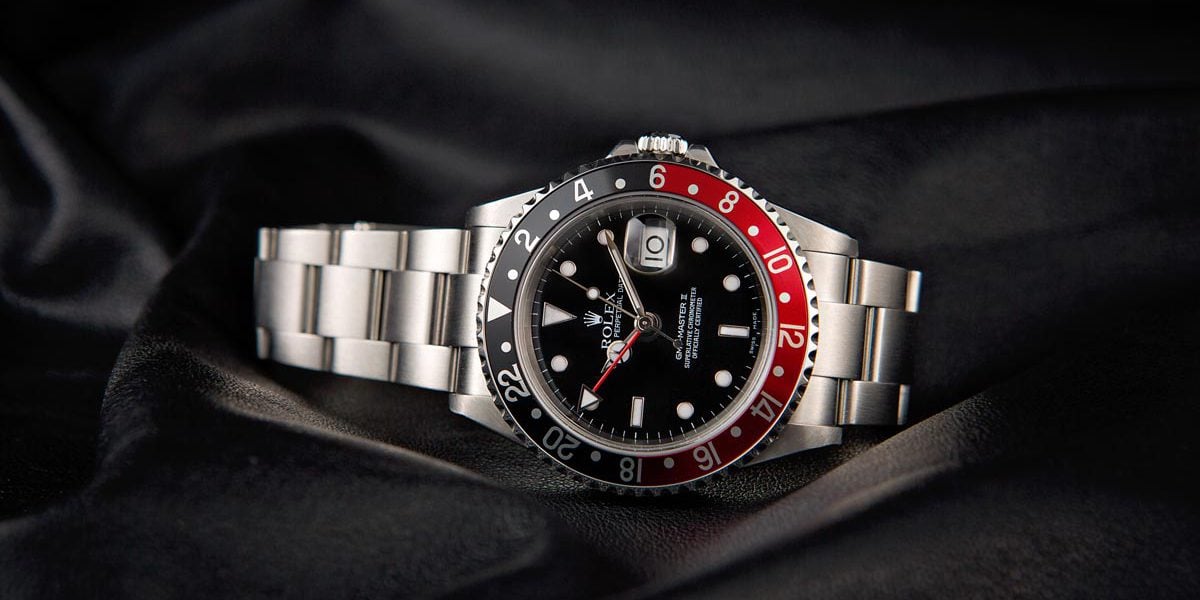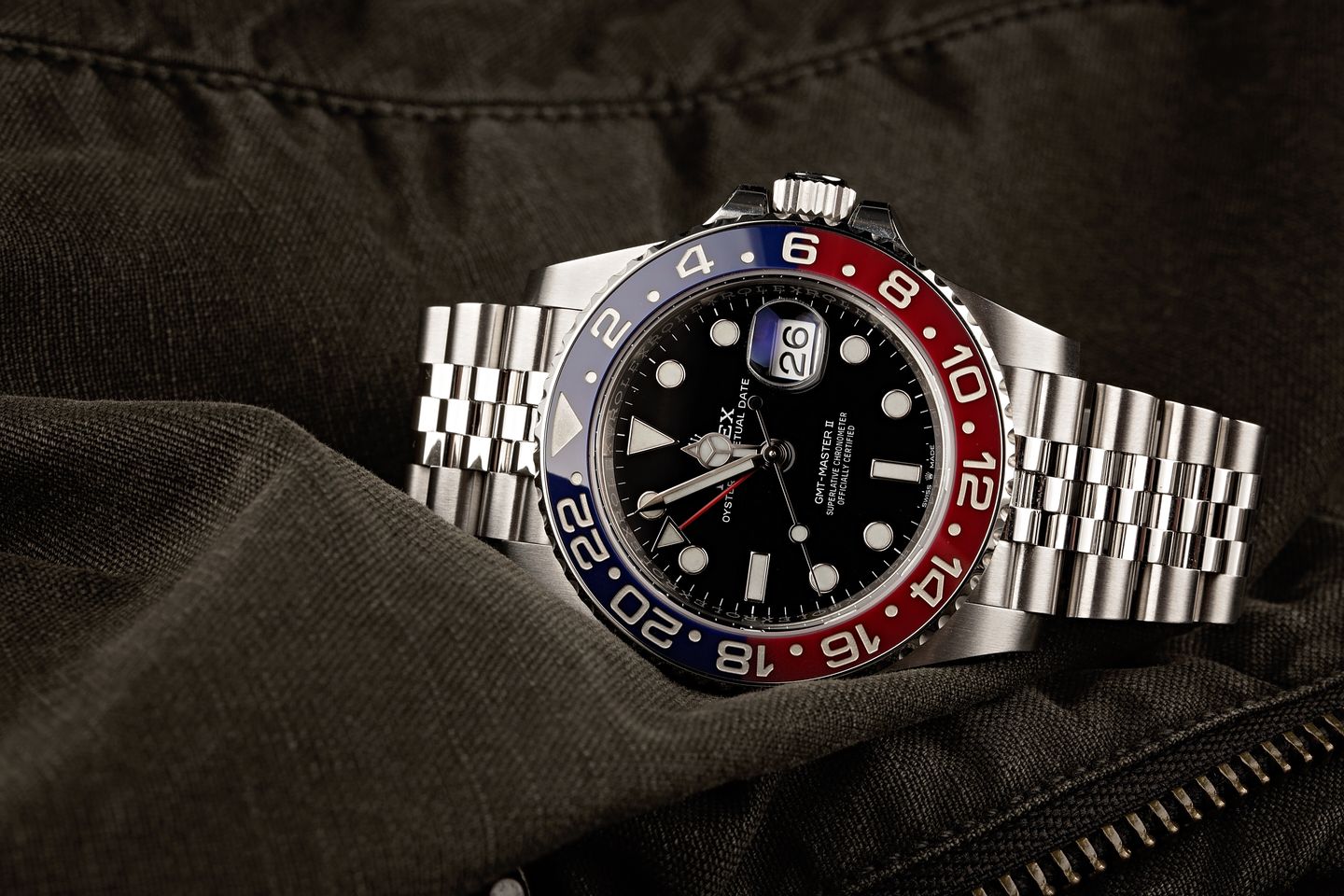The Rolex 16710 stands as a testament to horological excellence, blending functionality with timeless design. This review explores the watch’s rich history, key features, and enduring appeal in the luxury timepiece market. Whether you’re a seasoned collector or a first-time buyer, our in-depth analysis will guide you through the nuances of this iconic Rolex GMT-Master II model, helping you appreciate its value and make an informed decision.
History of the Rolex GMT-Master II 16710
The GMT-Master line traces its roots to the golden age of commercial aviation. Born from a collaboration between Rolex and Pan American Airways in 1954, the original GMT-Master was designed to meet the needs of intercontinental pilots. This pioneering watch allowed simultaneous reading of two time zones, revolutionizing timekeeping for globe-trotters.
The ref. 16710, introduced in 1989, marked a significant evolution in the Rolex GMT-Master II series. It replaced the short-lived ref. 16760, affectionately known as the “Rolex Fat Lady” due to its thicker case. The 16710 represented a return to the sleeker profile of earlier models while incorporating modern improvements.
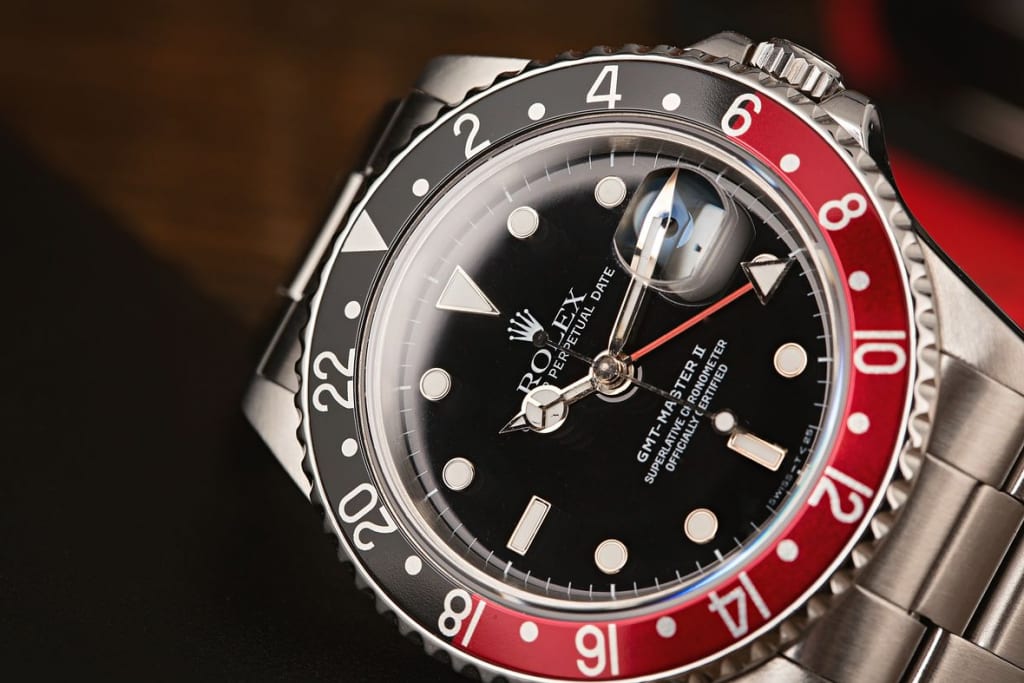
Building upon the legacy of its predecessors, notably the Rolex 1675 and 16760, the 16710 refined the GMT concept. It retained the iconic bi-color bezel for day/night indication but introduced a more versatile movement. This new iteration allowed independent adjustment of the hour hand, a feature that would become a hallmark of the GMT-Master II line, cementing its status as the ultimate traveler’s watch.
Key Features of the Rolex 16710
The Rolex GMT-Master II 16710 is a horological masterpiece, blending form and function in a package that has stood the test of time. Let’s delve into the key features that make this watch a perennial favorite among enthusiasts and collectors alike.
Case and Bezel
The 16710 sports a classic 40mm stainless steel case, striking the perfect balance between presence and wearability. Its Oyster construction ensures robustness and water resistance, a hallmark of Rolex sport watches. The case’s refined lines and polished surfaces exude an air of understated luxury, suitable for both boardroom meetings and casual outings.
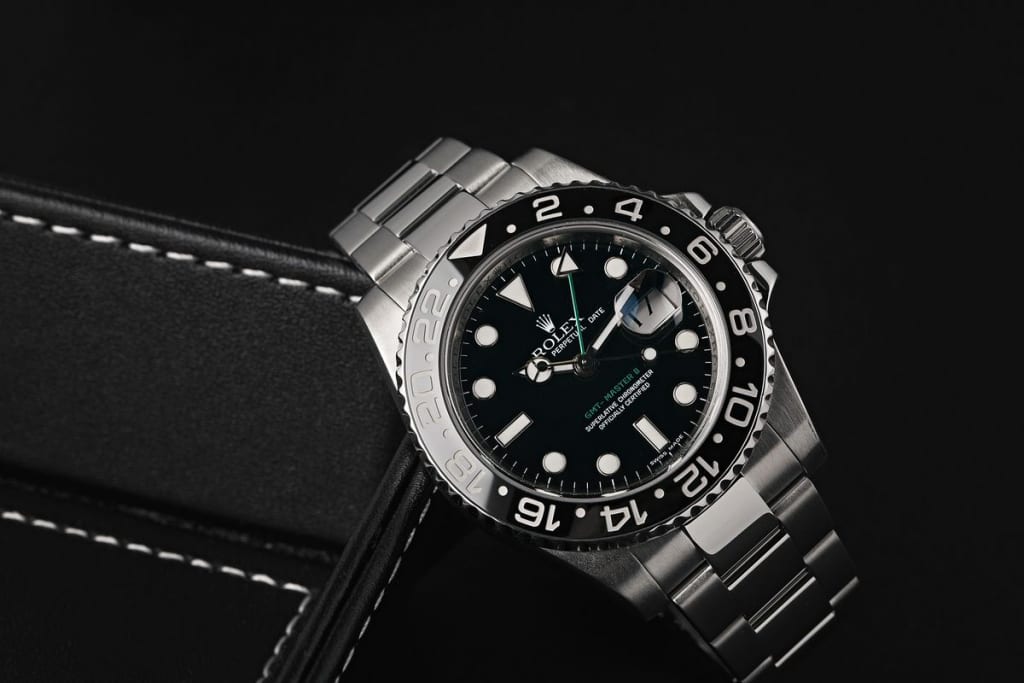
Perhaps the most distinguishing feature of the 16710 is its aluminum bezel insert. Available in three iconic color combinations – the red and blue “Rolex Pepsi,” the red and black “Rolex Coke,” and the versatile all-black – these bezel options offer collectors variety and personality. The aluminum insert, while less scratch-resistant than modern ceramic versions, develops a unique patina over time, telling the story of the watch’s journey with its owner.
Movement
At the heart of the 16710 beats a robust and reliable movement. Early models featured the Caliber 3185, later replaced by the Caliber 3186 in the mid-2000s. Both movements offer exceptional accuracy and reliability, hallmarks of Rolex’s commitment to precision.
The Caliber 3185 and 3186 are self-winding mechanical movements with a power reserve of approximately 50 hours. They feature Rolex’s Parachrom bleu hairspring, offering greater resistance to shocks and temperature variations. The key difference in the 3186 is its improved hairspring design, which provides even better stability in various conditions.
Dial and Hands
The dial of the 16710 exemplifies Rolex’s philosophy of form following function. Its clean, uncluttered layout prioritizes legibility without sacrificing aesthetics. The gloss black dial serves as a perfect backdrop for the luminous hour markers and hands, ensuring readability in all lighting conditions.
Over its production years, the 16710 saw a transition from tritium to Super-LumiNova for its luminescent elements. This change not only improved low-light visibility but also eliminated the charming patina development of earlier tritium dials. The watch features Rolex’s iconic Mercedes hands for hours, minutes, and seconds, with a distinctive arrow-tipped hand for the GMT function.
Bracelet and Clasp
The 16710 is typically fitted with Rolex’s robust Oyster bracelet. This three-piece link design is renowned for its comfort and durability, perfectly complementing the watch’s sporty yet elegant aesthetic. Early models featured hollow end links, later upgraded to solid end links for improved stability and a more premium feel.
The bracelet is secured by Rolex’s Oysterlock clasp, ensuring the watch stays firmly on the wrist. Some later models also included the Easylink comfort extension system, allowing for quick adjustment of the bracelet length – a handy feature for accommodating wrist size fluctuations throughout the day.
Water Resistance
With a water resistance rating of 100 meters (330 feet), the 16710 is more than capable of handling everyday water exposure. While it may not match the depths achievable by Rolex’s dedicated dive watches, it offers ample protection for swimming and snorkeling.
This level of water resistance, combined with the watch’s robust construction, underscores its versatility as a true “go-anywhere” timepiece. Whether you’re in the boardroom, on a transatlantic flight, or enjoying a beach vacation, the 16710 is up to the task.
Variations and Rarity
The Rolex GMT-Master II 16710 offers a fascinating array of variations that contribute to its enduring appeal among collectors. The most noticeable differences lie in the bezel colors. The “Pepsi” (red and blue) bezel harks back to the original GMT-Master, while the “Coke” (red and black) offers a sportier alternative. The all-black bezel version provides a more understated look, appealing to those who prefer a less conspicuous aesthetic.
One of the most significant transitions in the 16710’s production history was the shift from tritium to Super-LumiNova for the luminescent elements. Early models featuring tritium dials are highly sought after by collectors, particularly as they age and develop a unique patina. The transition period saw some interesting variations, including “Swiss Only” dials and the short-lived “Swiss Made” tritium dials.
Among the rarest and most collectible 16710 variants are those with special dial combinations. These include the elusive “error” dials with misaligned coronets or unusual font variations. Additionally, some 16710s were fitted with jubilee bracelets instead of the standard Oyster bracelet, adding another layer of collectibility. These variations, combined with the watch’s long production run, offer collectors a rich tapestry of options to pursue.
Collectibility and Market Value
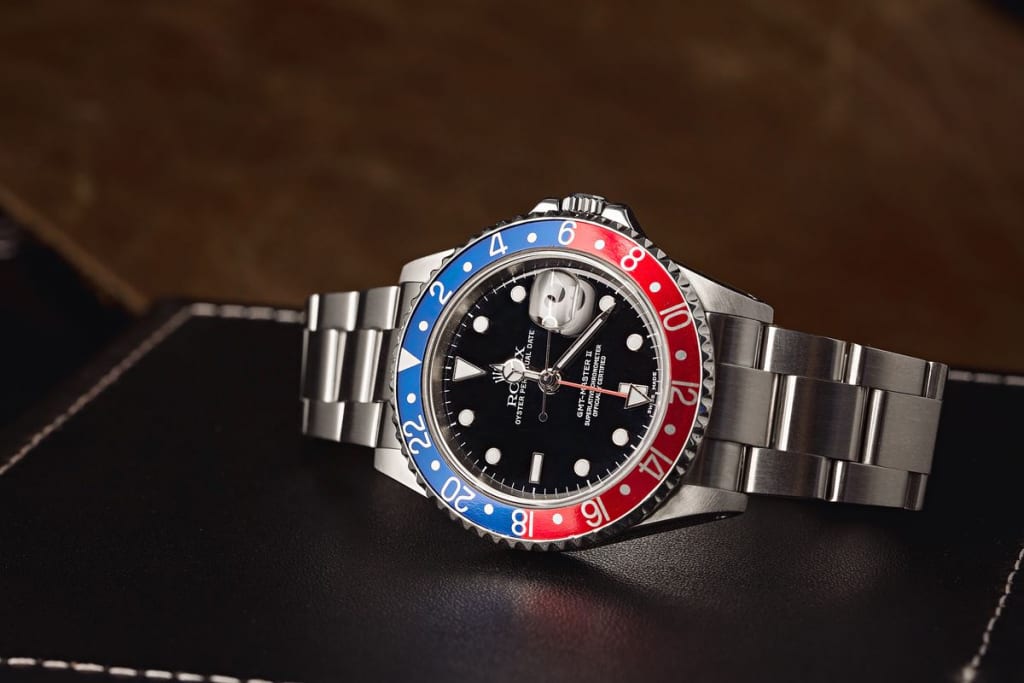
The Rolex GMT-Master II 16710 has firmly established itself as a highly desirable piece among watch collectors and enthusiasts. Its blend of classic design, practical functionality, and Rolex pedigree makes it a perennial favorite in the secondary market.
Why the Rolex 16710 is Sought After by Collectors
Collectors are drawn to the 16710 for several compelling reasons. Its status as the last aluminum bezel GMT-Master II gives it a vintage charm that newer ceramic models lack. The variety of bezel options allows collectors to pursue different variations, each with its own aesthetic appeal. Additionally, the 16710’s long production run means it often holds nostalgic value for many buyers.
Factors Influencing Value
The value of a 16710 can vary significantly based on several factors. Condition is paramount, with well-preserved examples commanding premium prices. The type of bezel plays a crucial role, with “Pepsi” variants often fetching higher prices due to their iconic status. The presence of original boxes, papers, and accessories can substantially increase value, as collectors prize complete sets.
Market Trends and Resale Value Over the Years
The market for the 16710 has seen steady appreciation over the years. As Rolex has moved towards larger cases and ceramic bezels in their current lineup, the more modestly sized 16710 has found renewed appreciation. Early tritium dial models have seen particularly strong growth in value. While prices can fluctuate with market trends, the 16710’s status as a classic Rolex sport model ensures its long-term desirability and value retention.
Comparisons with Other GMT-Master Models
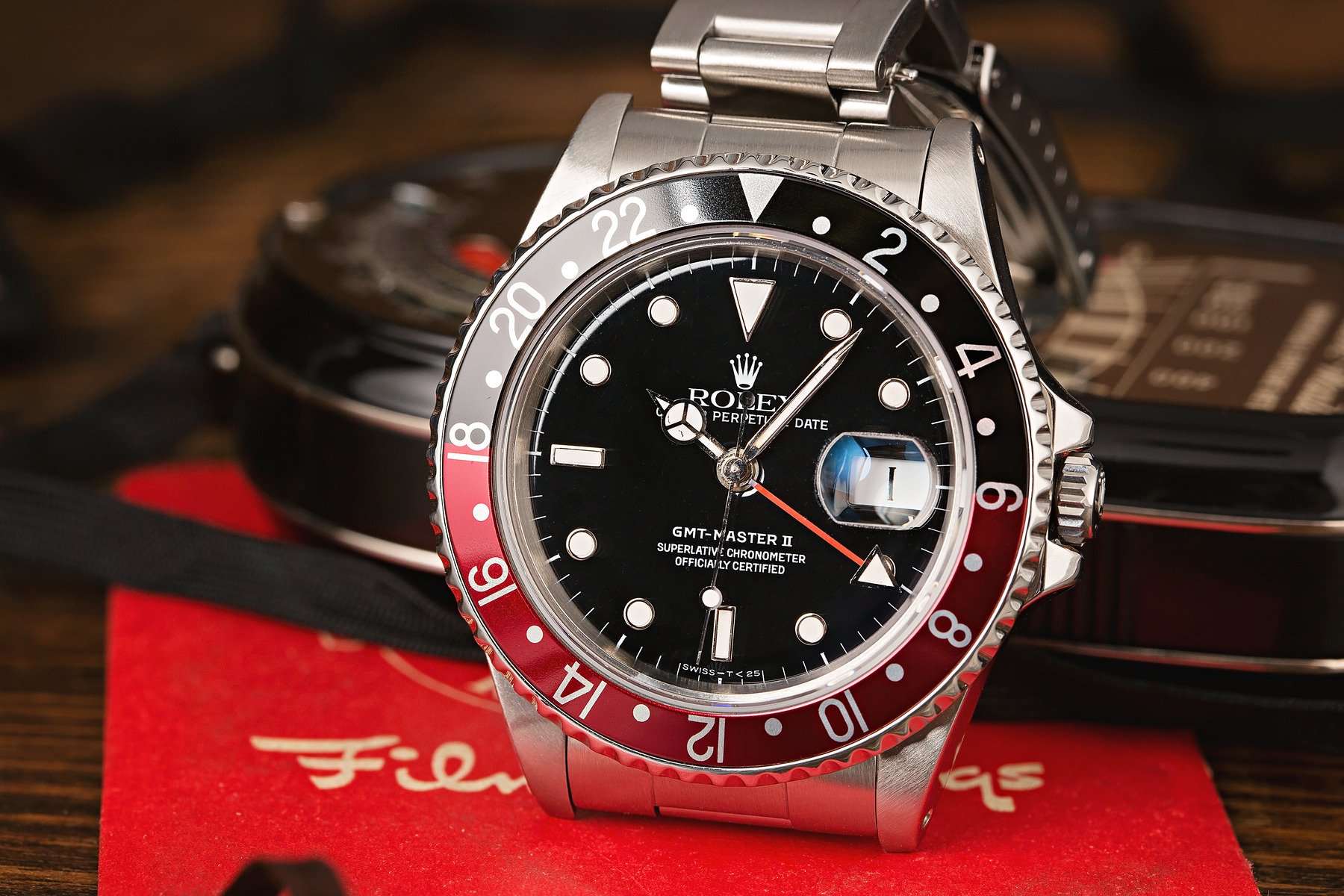
The Rolex GMT-Master II 16710 occupies a unique position in the lineage of Rolex’s multi-time zone watches. When compared to its predecessor, the ref. 1675, the 16710 represents a significant technological leap. While the Rolex 1675 required adjusting both the bezel and the hour hand to track a second-time zone, the 16710’s independently adjustable hour hand offers greater functionality and ease of use.
In contrast to modern Rolex GMT-Master II models, the 16710 maintains a more vintage aesthetic. The aluminum bezel insert, while less scratch-resistant than current ceramic versions, develops a character-rich patina over time. The 16710 also features a slimmer profile and lighter weight compared to its modern counterparts, appealing to those who prefer a more understated presence on the wrist.
When held against contemporary models like the “Batman” (Rolex 116710BLNR) or the new “Pepsi” (ref. 126710BLRO), the 16710 holds its own in terms of functionality. However, it lacks some modern refinements such as the Cerachrom bezel, upgraded movement, and improved bracelet technology. Nevertheless, many enthusiasts argue that the 16710’s classic proportions and vintage charm give it an edge in terms of timeless appeal.
Pros and Cons of the Rolex 16710
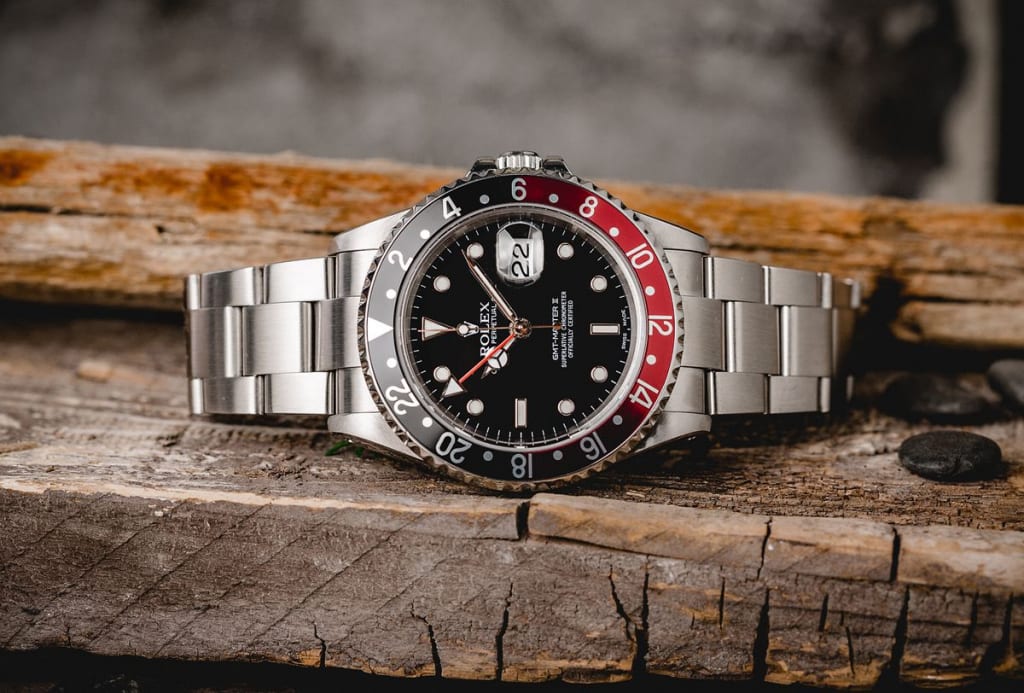
The Rolex GMT-Master II 16710 offers a compelling package, but like any timepiece, it comes with its own set of advantages and drawbacks. Understanding these can help potential buyers make an informed decision.
Pros of the Rolex 16710
One of the 16710’s greatest strengths is its versatile design. The classic 40mm case size suits a wide range of wrists, and the various bezel options allow for personalization. Its ability to track multiple time zones without sacrificing elegance makes it equally at home in casual and formal settings.
The 16710’s classic appeal is undeniable. It represents a sweet spot in Rolex’s design evolution, combining modern reliability with vintage aesthetics. The aluminum bezel, while less durable than ceramic, develops a unique patina that many collectors find charming. This model’s long production run also means that finding one in good condition is relatively easy.
Cons of the Rolex 16710
Compared to modern Rolex models, the 16710 lacks some contemporary features. The aluminum bezel is more prone to scratches and fading than the current ceramic versions. While this can add character, it may not appeal to those who prefer their watches to remain pristine.
The movement, while reliable, is older technology compared to newer models. It lacks some of the advanced anti-magnetic properties and extended power reserves of Rolex’s latest calibers. Additionally, as these watches age, maintenance costs can increase, particularly for examples that haven’t been well cared for over the years.
Buying Tips for the Rolex 16710
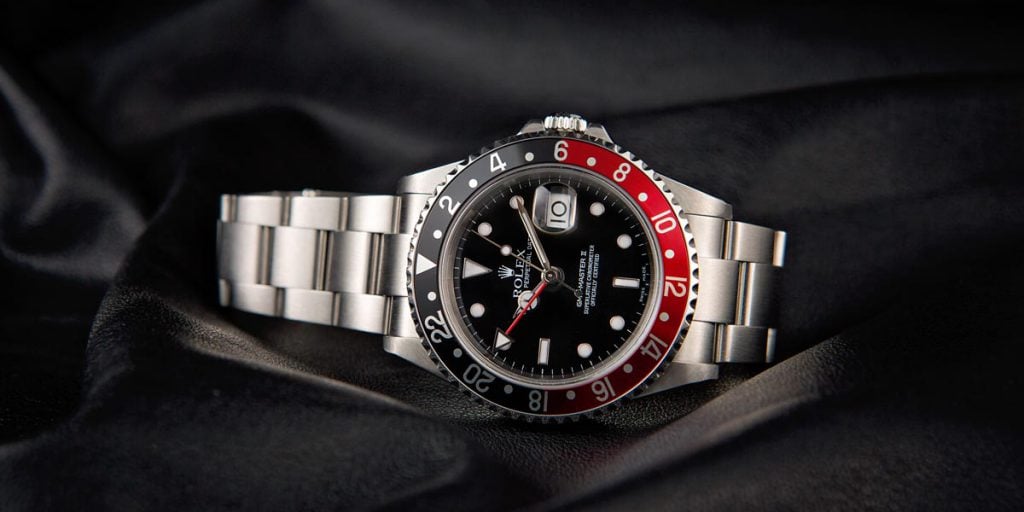
When considering a Rolex GMT-Master II 16710, there are several key factors to keep in mind. First and foremost, authenticity is paramount, and it’s really important to know how to spot a fake Rolex. Given the value of these watches, ensure you’re buying from a reputable source. Examine the watch carefully for signs of refinishing or replacement parts, as the original condition commands a premium.
The watch’s overall condition significantly impacts its value. Look for examples with sharp case lines, indicating minimal polishing. The bezel insert’s condition is crucial – while some fading can be desirable, excessive wear may detract from the watch’s value. Original dial and hands are highly prized, so be wary of service replacements.
When it comes to purchasing, reputable dealers specializing in pre-owned luxury watches are often the safest bet. They typically offer warranties and have the expertise to authenticate pieces. Auction houses can be good sources for rare variants but require more knowledge to navigate confidently. Online marketplaces can offer deals but come with higher risks.
Pricing for the 16710 varies widely based on condition, completeness, and rarity. As of 2024, expect to pay anywhere from $12,000 to $20,000 for a good example, with rare variants or pristine full sets commanding even higher prices. Always factor in potential service costs when budgeting for a vintage timepiece.
The Enduring Legacy of the Rolex GMT-Master II 16710
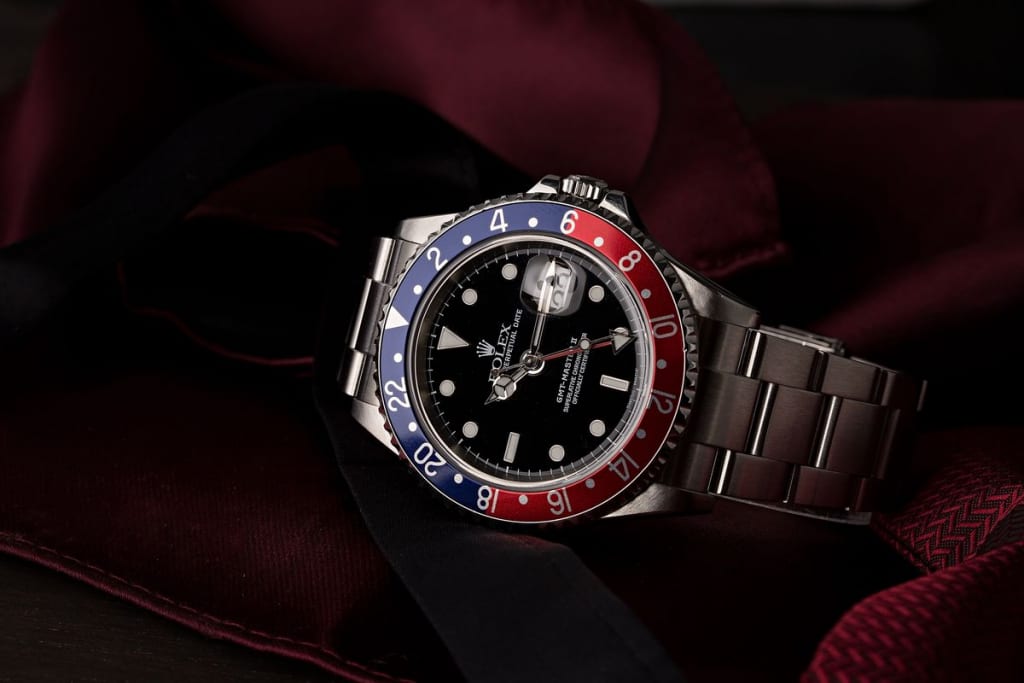
The Rolex GMT-Master II 16710 stands as a testament to Rolex’s commitment to precision, durability, and timeless design. Its blend of classic aesthetics and practical functionality continues to captivate watch enthusiasts and collectors worldwide. The 16710 represents a pivotal point in the history of GMT-Master, bridging the gap between vintage charm and modern reliability.
As the watch market evolves, the 16710’s position as a collectible seems only to strengthen. Its versatility, both in style and function, ensures its relevance in any watch collection. Whether as a daily wearer or a cherished collectible, the 16710 offers a piece of horological history that can be worn and enjoyed.
For those looking to add a Rolex 16710 to their collection, Bob’s Watches offers a curated selection of these iconic timepieces. With our expertise in the luxury watch market, we ensure each Rolex 16710 for sale meets the highest standards of authenticity and condition. Explore our collection to find your perfect GMT-Master II and own a piece of Rolex history.
